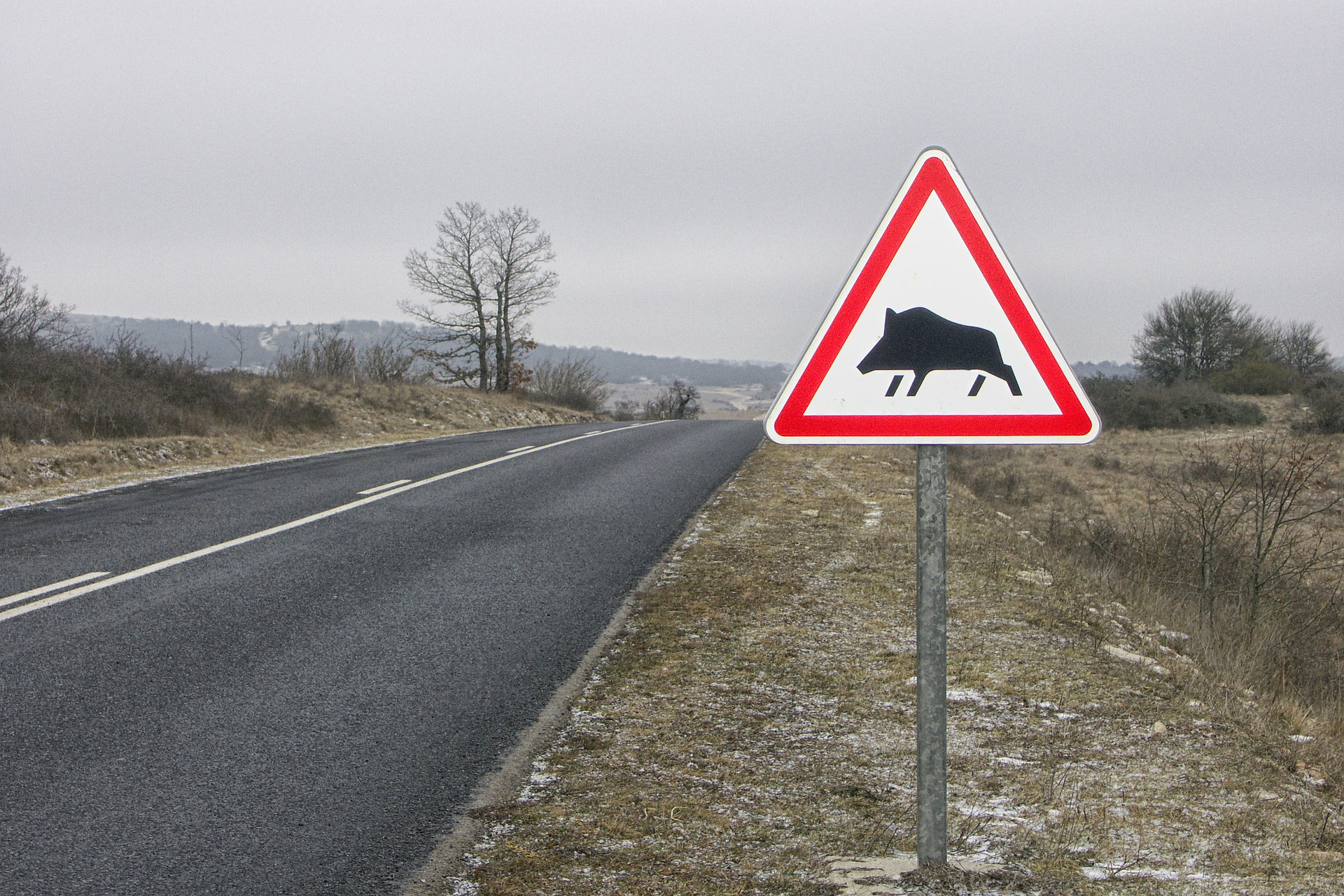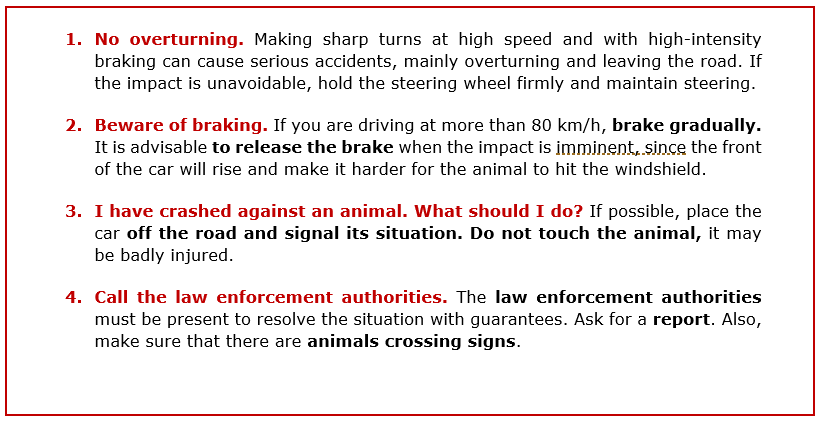
The number of accidents involving animals on Spanish roads has doubled in the last 5 years
- According to data from Línea Directa Aseguradora, accidents involving animals are increasingly frequent on Spanish roads: in just 5 years, their number has doubled to 11,400 claims.
- These are increasingly serious incidents, as the average cost of bodily injury has increased by 104% between 2017 and 2021. In addition, vehicle repairs are 2.4 times more expensive than repairs from common accidents, and management takes 38% longer.
- The legal change in 2014 transferred the responsibility for these accidents to the driver who, except in very specific cases, cannot file a claim against the preserve or the farm. This has meant that only 6% of these accidents receive compensation from the animal owners, vs 43% before the regulatory change.
- Only 40% of Spanish drivers have insurance that covers damage from running over animals. As a result, drivers with third-party insurance have to bear the full cost of repairing their cars unless they have specific coverage for these incidents.
- The typical accident involving animals usually occurs in rural settings, at night, on weekends and in autumn. Also, 2 out of 3 accidents occur on conventional roads, but incidents in urban areas have multiplied by 3 in the last 5 years and already account for 22% of the total.
- Soria (9.4%) is the province with the highest percentage of accidents involving animals, followed by Teruel (4.4%) and Huesca (4%). On the opposite end are Santa Cruz de Tenerife, Las Palmas and the Balearic Islands, with token incidence.
Madrid, 24 October 2022. Until a few years ago, wild boars, roe deer, deer or foxes were found near roads only in wild and rural areas. However, the gradual depopulation of rural areas, the lack of population control of some cynegetic species and the effect of the pandemic (animals lost their fear and entered urban areas) have all caused a significant increase in this type of accident.
In fact, the number of car accidents involving animals has doubled in the last five years and their proportion of total accidents has increased by 71%. Línea Directa Aseguradora has received almost 11,400 claims of this type from its customers between 2017 and 2021; and in provinces such as Soria, they already account for 9% of insurance claims.
These claims are increasingly serious and complex, since the average cost of compensation for bodily injury has gone up by 104% between 2017 and 2021 compared to 13.6% for common accidents. This complexity also extends to vehicle repairs, 2.4 times more expensive than repairs from of a normal accident, and to claims management, 38% slower.
These are some of the main findings of the study "Animals on the road: A mortal danger. Accidents involving animals on Spanish roads (2017-2021)" (Animales en la carretera: un peligro mortal. Accidentes contra animales en las carreteras españolas) by Línea Directa Aseguradora.
In the words of Mar Garre, Director of People, Communication and Sustainability at Línea Directa Aseguradora, "accidents involving animals are especially dangerous and complicated to claim, so it is important to have coverage that, for just €35, covers this type of claim, especially if you live in certain areas or travel inland in autumn. And if you have this type of accident, you must have a report from the law enforcement authorities so that the insurer may file a claim against the animal owners."
What are accidents involving animals like?
The travel speed on interurban roads and the weight and size of the animals means that these accidents are violent and dangerous. They usually happen in rural areas, at night (61%), on weekends, in autumn (34%) and involve wild boars or dogs. As for the type of road, 2 out of 3 accidents of this type happen on conventional roads (64%). However, in the last 5 years, they have multiplied by 3 in urban areas and already account for 22% of the total.
The parts of the car most affected are the front bumper, grille and bonnet (39%), followed by the headlights and indicators (22%), the front wings (14%), the underbody and front apron (10%), the radiator (4%) and the number plate (3%).
In terms of geographical location, Soria (9%) is the Spanish province with the highest percentage of accidents involving animals, followed by Teruel (4.4%) and Huesca (4%). At the opposite end of the spectrum we find the provinces of Santa Cruz de Tenerife, Las Palmas and the Balearic Islands, all islands.
Claiming: mission impossible
Eight years ago Law 6/2014 was approved. It transferred the responsibility for these accidents to the driver, who, except in very specific cases, cannot file a claim against the preserve or the farm for the damages suffered. The regulations only allow liability to be demanded if the incident is a direct consequence of group big game hunting on the same day or twelve hours before the crash or because the road is not properly fenced or signposted.
If the accident involves a pet, article 1.905 of the Civil Code states that the owners of these animals will be liable for the damages they cause, although the issue is that many of them have been abandoned or lack identification. A situation that can generate many problems for drivers, since only 40% of them have insurance against the damages caused in these accidents.
Since the change in the law, only 6% of the damages caused by animals receive compensation from the owners, compared to 43% in the claims prior to 2014, seven times less. By regions, Castile-La Mancha and the region of Madrid register the lowest number of successful claims, versus La Rioja and Navarre, which the highest percentage of compensation.
Tips in case of accident
